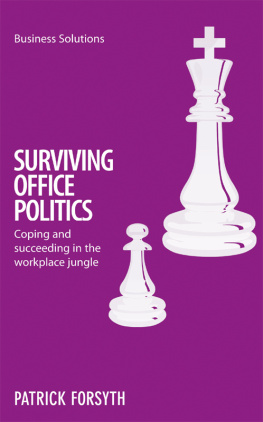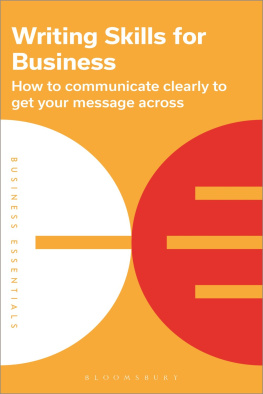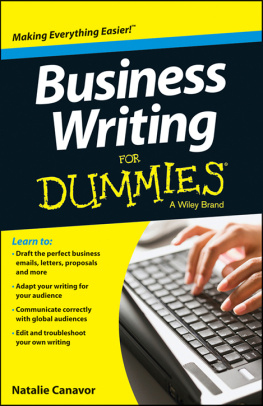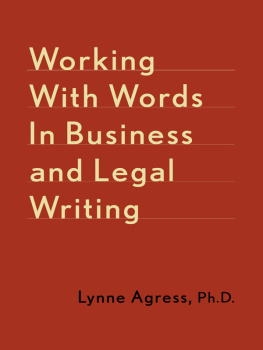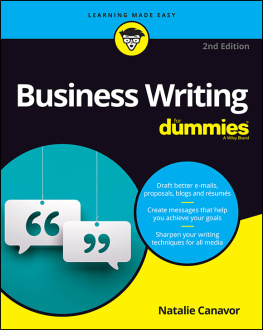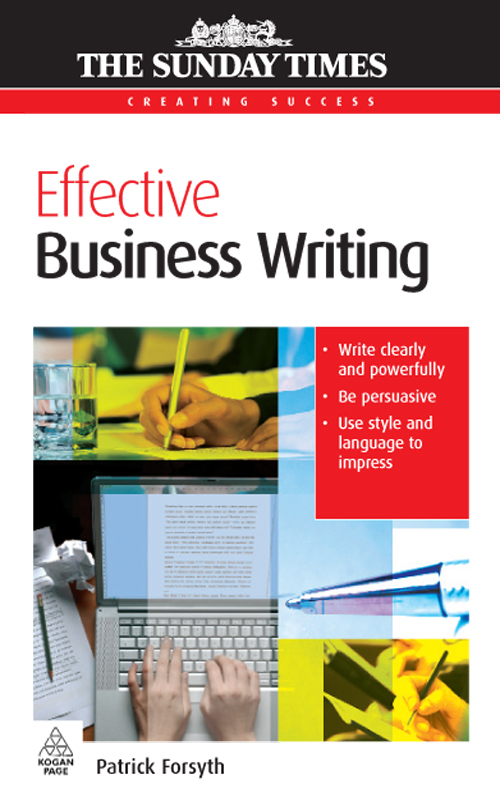Publishers note
Every possible effort has been made to ensure that the information contained in this book is accurate at the time of going to press, and the publishers and author cannot accept responsibility for any errors or omissions, however caused. No responsibility for loss or damage occasioned to any person acting, or refraining from action, as a result of the material in this publication can be accepted by the editor, the publisher or any of the authors.
First published in Great Britain and the United States in 2009 by Kogan Page Limited
Apart from any fair dealing for the purposes of research or private study, or criticism or review, as permitted under the Copyright, Designs and Patents Act 1988, this publication may only be reproduced, stored or transmitted, in any form or by any means, with the prior permission in writing of the publishers, or in the case of reprographic reproduction in accordance with the terms and licences issued by the CLA. Enquiries concerning reproduction outside these terms should be sent to the publishers at the undermentioned addresses:
120 Pentonville Road
London N1 9JN
United Kingdom
www.koganpage.com | 525 South 4th Street, #241
Philadelphia PA 19147
USA |
Patrick Forsyth, 2009
The right of Patrick Forsyth to be identified as the author of this work has been asserted by him in accordance with the Copyright, Designs and Patents Act 1988.
ISBN: 978 0 7494 5453 1
The views expressed in this book are those of the author, and are not necessarily the same as those of Times Newspapers Ltd.
British Library Cataloguing-in-Publication Data
A CIP record for this book is available from the British Library.
Library of Congress Cataloging-in-Publication Data
Forsyth, Patrick.
Effective business writing / Patrick Forsyth.
p. cm.
ISBN 978 0 7494 5453 1
1.Business writing. 2. Business communication. I. Title
HF5718.3F667 2008
651.794--dc22
2008040876
For Frances Kay
This one has to be for you; thanks again for your help and support (and wise words about e-mail).
(Frances Kay is an author with several successful business books to her name, including Brilliant Business Connections. She is also the editor of Kogan Pages excellent directory, The Good Non Retirement Guide.)
In the interest of security please ensure that your door is fully closed firmly before entering or leaving your room.
Sign on the inside of hotel room doors and a good trick if you can do it.
The sign quoted above makes a point: someone not only wrote this, they had it printed and posted on over 200 doors and apparently still didnt notice that it was nonsense. In the workplace, and elsewhere too, successful communication can often be difficult, and poor communication can cause problems. This may involve a momentary hiatus as two people try to sort out exactly what was meant. Or it may lead to a major misunderstanding that causes a project of some sort to be stopped in its tracks or a reputation to crumble. Why is this? There are many reasons, but one is certainly an assumption that what is being done is surely not difficult; for the most part we muddle through and hope to get there somehow in the end. If we dont, and if breakdowns in communication continue to occur, then some rethinking may prove useful.
Furthermore some kinds of communication are inherently more difficult than others. The intentions of communication may vary. It may need to inform, explain, motivate, challenge, prompt a debate or more; and such intentions are not mutually exclusive: one communication may need to do several of these things at once. It may well prove difficult to succeed in even the simplest of these. Perhaps a message is simply superfluous, like the motorway sign saying This sign is not in use.Sometimes the message may be muddled, but the true meaning can be inferred, as with the sign at the zoo that said Bring one child and another goes free (What? Released into the wild?) Or the health and safety newsletters item about bouncy castles under the heading Inflatable childrens play equipment.It might also be affected by moving from one language to another as was presumably the case with the notice in the bathroom of a hotel in Portugal that said Please ensure that mat is affixed firmly to bottom before entering shower.
On other occasions messages may end up meaningless:
To talk about information is to talk about objectives. A lot of thought is now being applied throughout the NHS to mission statements and objectives, from which we should obtain a clearer view of our information needs. However, objectives will never stand still, and therefore an information strategy will of necessity be a continuously developing concept. The process of clarification will be incremental, and the concept of a definitive strategy will remain illusory.
Yes, well, passing over the idea of objectives never standing still, this simply gets lost amidst its own pretensions. It is from a Regional Health Authority report quoted in the press.
Sometimes too it is the pretension that seems to produce the over-engineering. For example this description: a new and improved pest control system that utilises a percussive device with a planar surface and orthogonal contoured extension to instantly kill insects stone dead. What? It means hitting the bug with a hammer when it is on a flat surface! So, any communicating clearly needs some care. Even when care is being taken additional complications may contrive to compound the issues.
There is a further problem, and that is that most people are better at communicating face-to-face than in other ways. Other methods all have their disadvantages. The telephone is good, immediate, maybe quick and easy, but try describing to someone over the telephone how to, say, tie a shoelace. Think about it for a second. You know how to do it, you could show someone but, on the telephone, using only your voice, it is somehow more of a problem.
Maximum difficulty
One method that seems consistently to render people less articulate is when they have to put something in writing. Your manager wants a note about it, the board members need a report or proposal, my editor wants a book (and there are still nearly 40,000 words to go!). Business writing almost seems to hinder good communication. People who can talk about something and usually get their message over successfully, find themselves descending into a muddle and writing something over-formal, over-long and at worst forgetting somewhere along the way exactly what their objectives were in the first place. Technical matters and technology make things worse. This: We provide the leading business-to-business solution for clinical data capture and management for the pharmaceutical and biotech industry probably means We streamline processes to speed important new drug therapies to market.
If the style is archaic and the language is labyrinthine; if it is replete with sesquipedalians, places its full points over-long distances apart and allows an element of galimatias to act to confuse and obscure the sense and another thing, it is without structure. Sorry, try again. If you write something full of long words and long sentences, which has no recognisable structure to guide you through, it is likely to fail. Incidentally, sesquipedalian is a long word, takes one to know one I suppose, and galimatias is gibberish. I know it says on the books cover that there would be no inappropriate long words used in this book and here are two before we even reach Chapter 1; but they are only there to illustrate what to avoid. Just to get all this out of the way, hippopotomstrosesquipedaliophobia is a fear of long words; perhaps something from which all business writers should aim to suffer.





